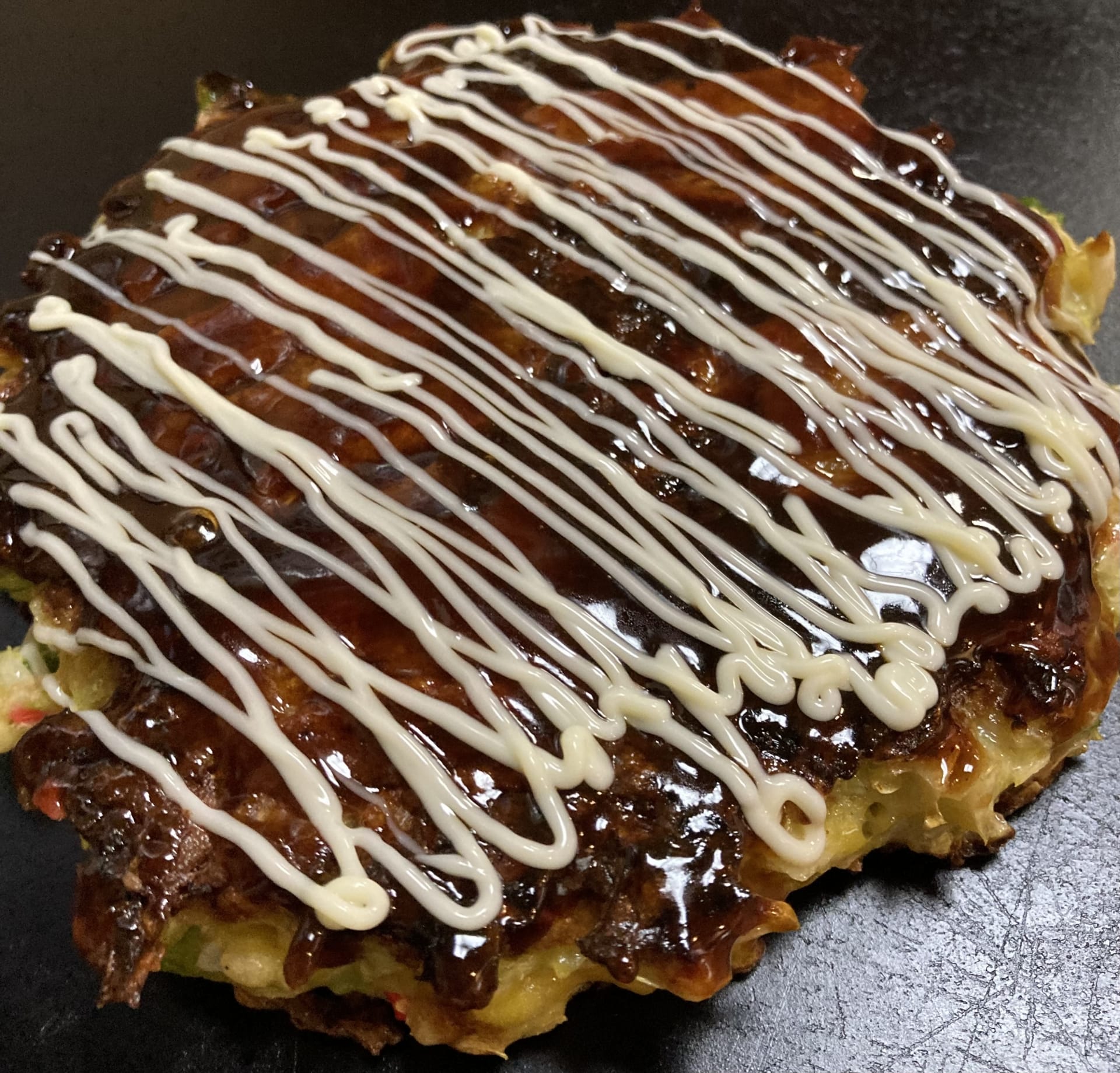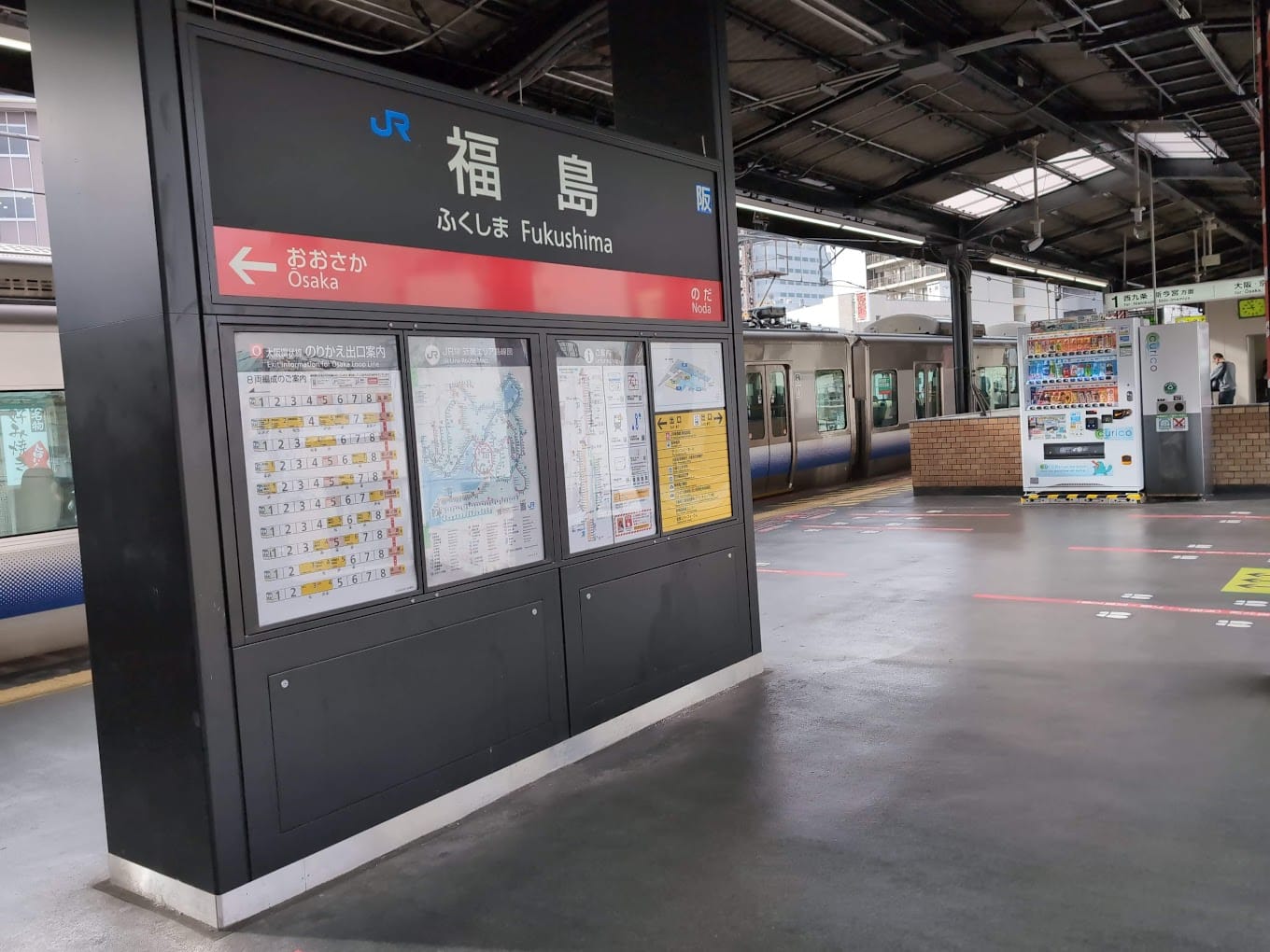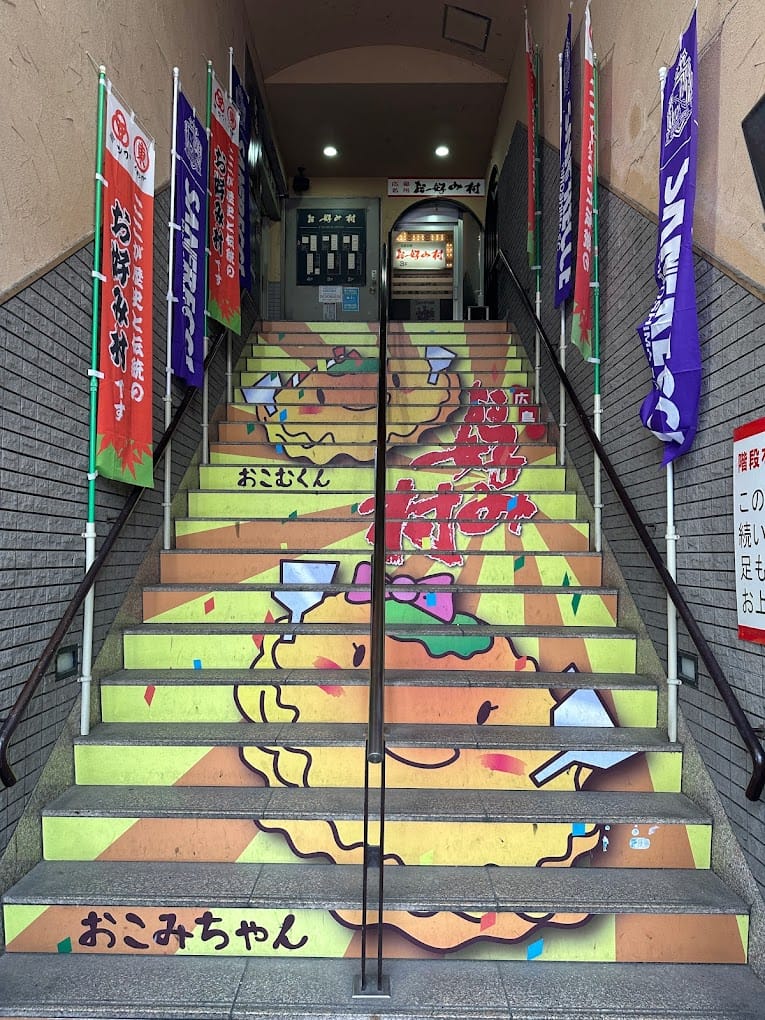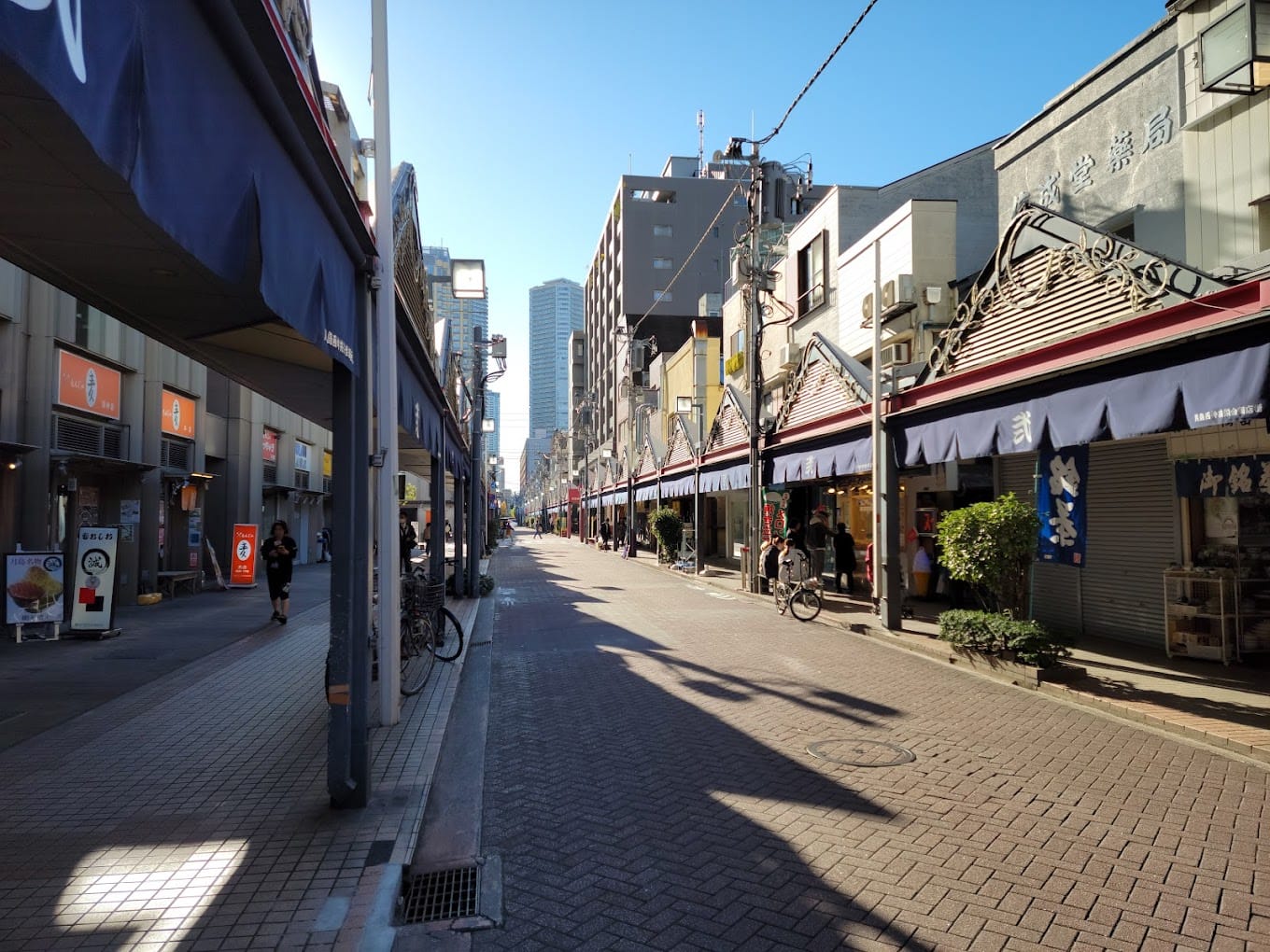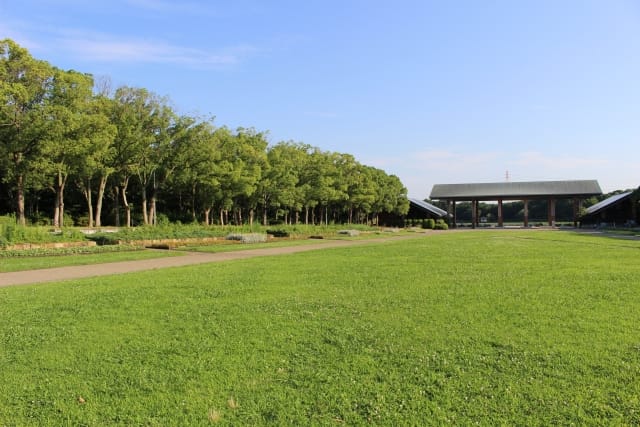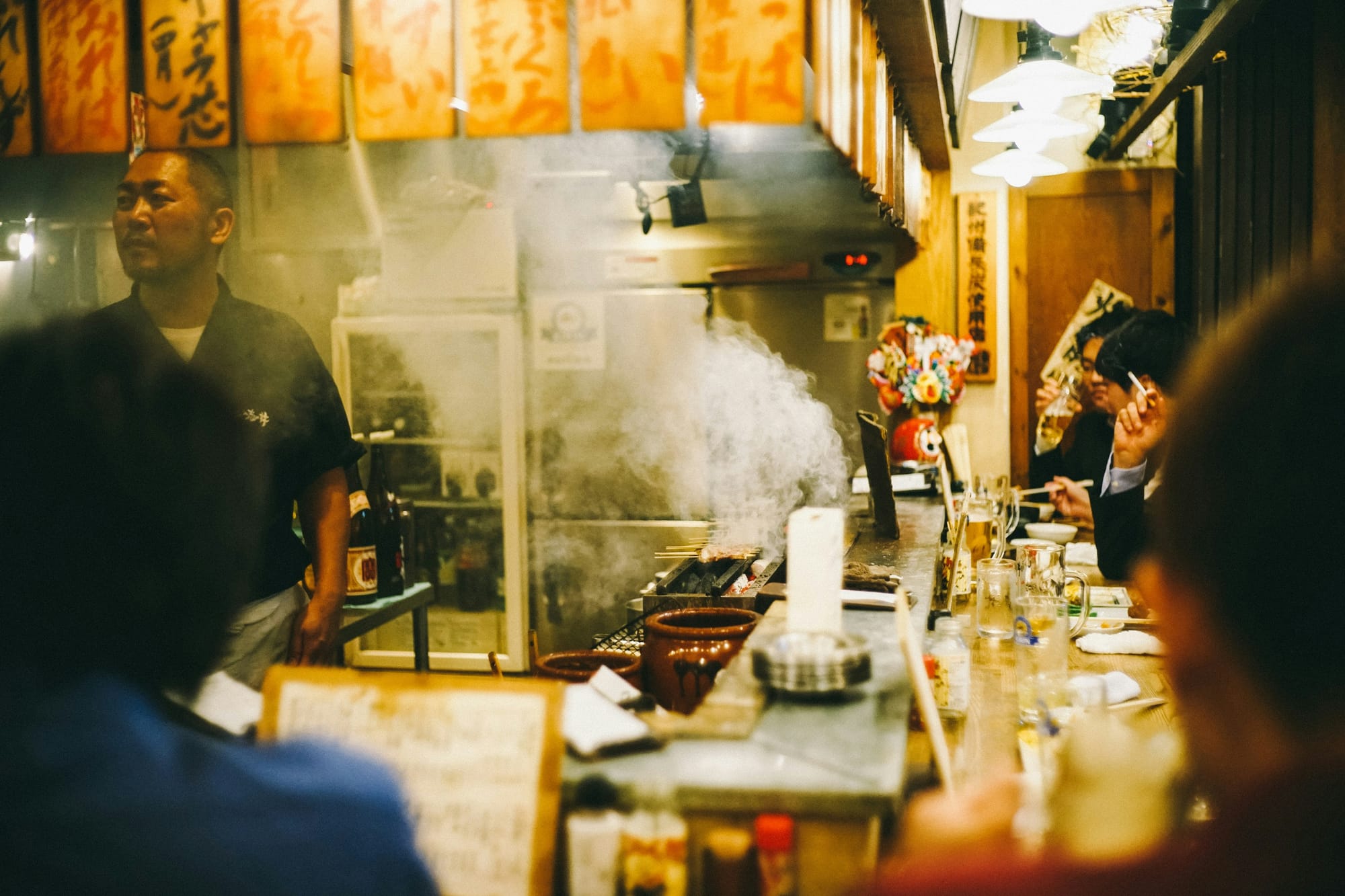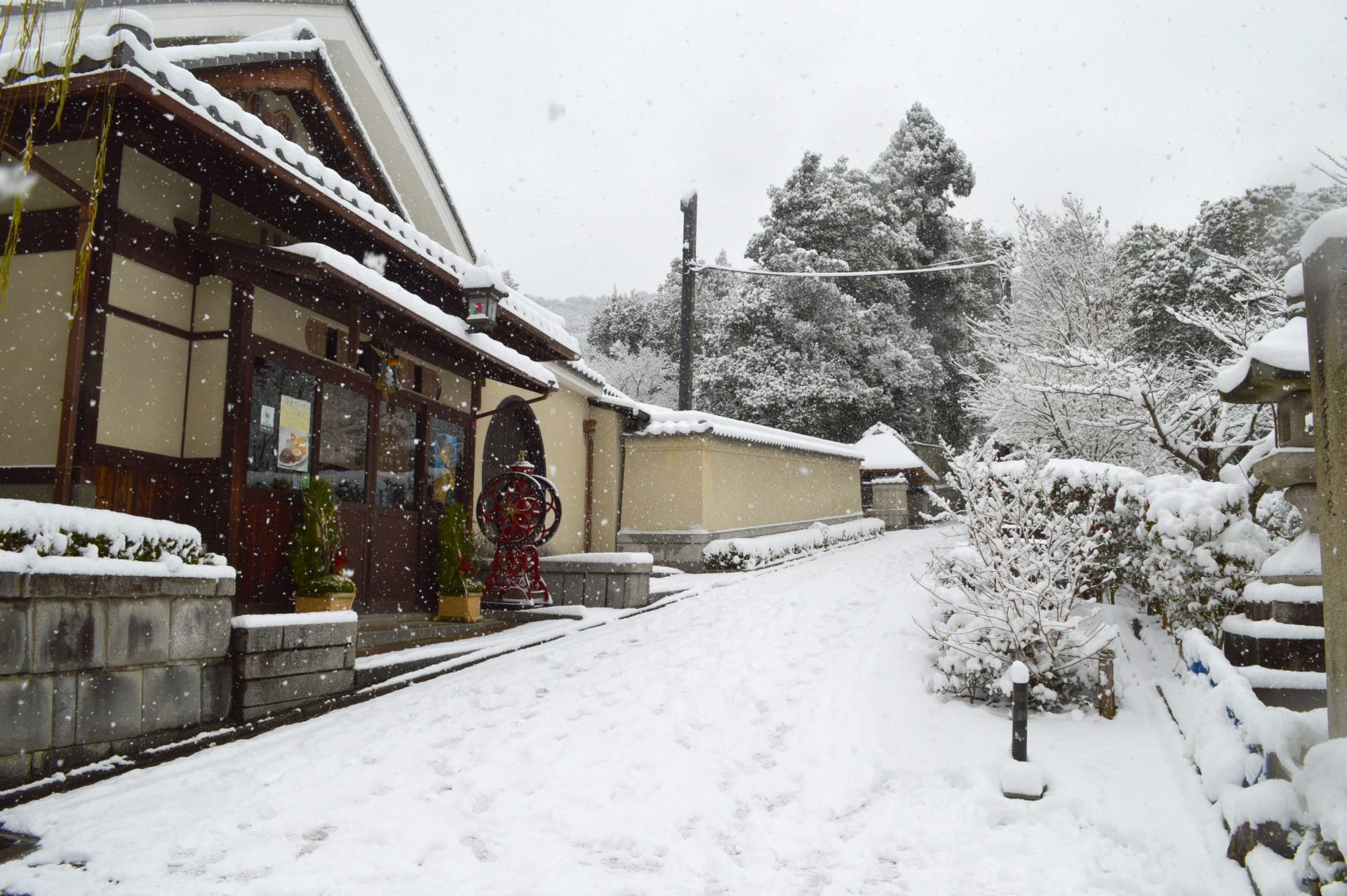Okonomiyaki Guide: Japan's Savory Pancakes
The reason for updating the article is the growing interest in tours that allow visitors to enjoy Japanese food culture and delicious dishes. As these tours gain popularity, Magical Trip's tour, which ranked #1 among all tours on Tripadvisor, has been receiving numerous applications.

For those wanting to enjoy Okonomiyaki, I recommend joining the "Osaka Local Foodie Tour in Dotonbori and Shinsekai." You can fully enjoy Osaka specialties like kushikatsu, takoyaki, and okonomiyaki with guidance from local residents.
For those interested in traditional Japanese cuisine, join the "Wagyu Beef & Sake Paring Foodie Tour in Ginza," where a knowledgeable local guide will take you to their highly recommended Japanese restaurants. While enjoying Wagyu and sake, your local guide will teach you proper dining etiquette and the best ways to savor each dish.
If you want to enjoy exceptional Japanese cuisine in Tokyo, consider joining one of these tours. With expert guides who know Tokyo inside and out showing you their recommended restaurants, you'll have an unforgettable Japanese dining experience.
・Tokyo Bar Hopping Night Tour in Shinjuku(ranked #1 among all tours on Tripadvisor)
・Finest Quality Sushi & Tempura Dining Experience in Ginza
We hope you'll have a wonderful time experiencing everything Ueno has to offer by joining a Magical Trip tour!
Introduction
If you come to Japan, there's one dish I definitely want you to try at least once. That's "okonomiyaki". It's a true Japanese soul food, made by mixing your favorite ingredients like cabbage, meat, and seafood into a batter and grilling it.
I was shocked the first time I ate Hiroshima-style okonomiyaki. Having only known the Kansai style, I was surprised that it contained noodles. But the moment I took a bite, that surprise turned into amazement!
The crispness of the cabbage, the juiciness of the meat, the chewy texture of the noodles. Add the sauce and mayonnaise, and it was simply superb!
Since then, I can't get enough of discovering the different ingredients, cooking styles, and atmospheres unique to each region, from Osaka to Tokyo.
But ultimately, I think the best thing about okonomiyaki is being able to gather around and eat it together. Okonomiyaki creates a wonderful time where you naturally smile when the piping hot pancake is right in front of you.
What is Okonomiyaki?
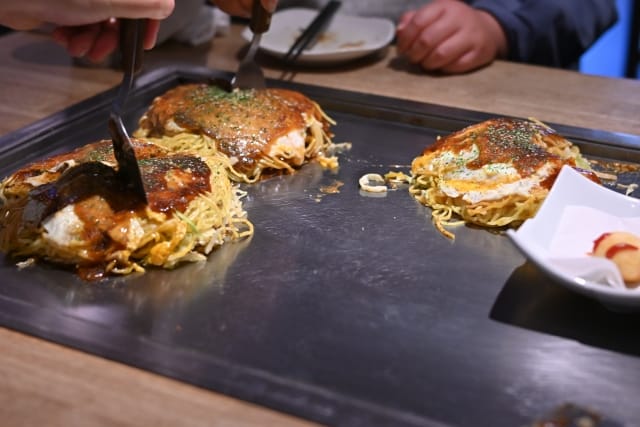
First, let me explain the basics of okonomiyaki. Okonomiyaki is a dish made by mixing ingredients like cabbage, meat, and seafood into a batter made of flour and water, and then grilling it.
The name "okonomiyaki" comes from combining the words "okonomi" (as you like) and "yaki" (grilled). In other words, it's a dish where you can use your favorite ingredients to grill. One of the great things about okonomiyaki is that you can customize it to your liking.
Okonomiyaki has been around for a long time, but it became widely popular after World War II as an affordable and filling home-cooked meal. I find it deeply moving that the wisdom of the common people born in the post-war food shortage has now become a dish that represents Japan.
When eating okonomiyaki, the standard toppings are okonomiyaki sauce, mayonnaise, aonori seaweed, and bonito flakes. The sauce is particularly essential. The sweet and rich sauce really brings out the flavor of the okonomiyaki.
Another appeal of okonomiyaki is the texture created by cooking it on an iron griddle. The surface is crispy and fragrant, while the inside is fluffy. The volume is so substantial, you wouldn't think it's made with flour.
Why the Japanese Love Okonomiyaki
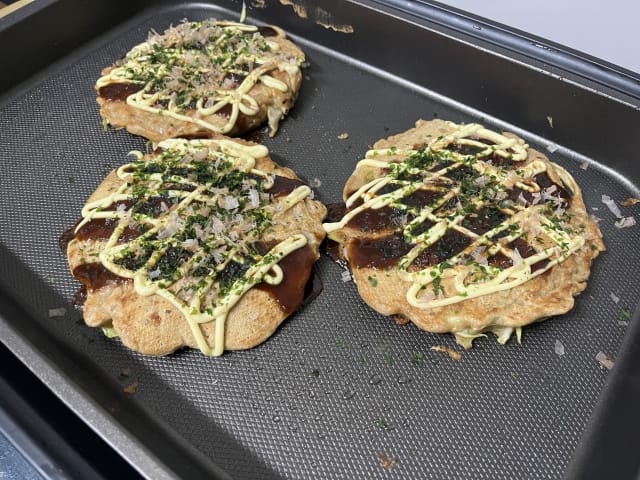
Why do the Japanese love okonomiyaki so much? There are several reasons.
The first reason is that okonomiyaki allows you to choose your "favorite" ingredients. Being able to freely combine your favorite ingredients like vegetables, meat, and seafood is perfect for Japanese tastes.
The second reason is that okonomiyaki is easy to make even as a home-cooked meal. Since all you have to do is mix the ingredients and grill them, even people who aren't good at cooking can give it a try. It's also fun to have okonomiyaki parties at home.
The third reason is that there are various regional variations of okonomiyaki. From Kansai style to Hiroshima style to Tokyo's monjayaki, it's one of the pleasures of traveling to compare and taste them. I absolutely love trying okonomiyaki in different regions.
And the fourth reason is that by gathering around and eating okonomiyaki, everyone can deepen their communication. The style of eating while chatting around a single griddle is very Japanese. I feel that okonomiyaki not only sparks conversation but also deepens bonds.
For these reasons, okonomiyaki continues to be loved by Japanese of all ages.
Various Types of Okonomiyaki by Region
Okonomiyaki really has distinct characteristics depending on the region. Kansai style, Hiroshima style, Tokyo's monjayaki - fans of each region's okonomiyaki insist that their style is the best. The differences are truly significant.
Let's take a closer look at each region's okonomiyaki in this guide.
Kansai-Style Okonomiyaki
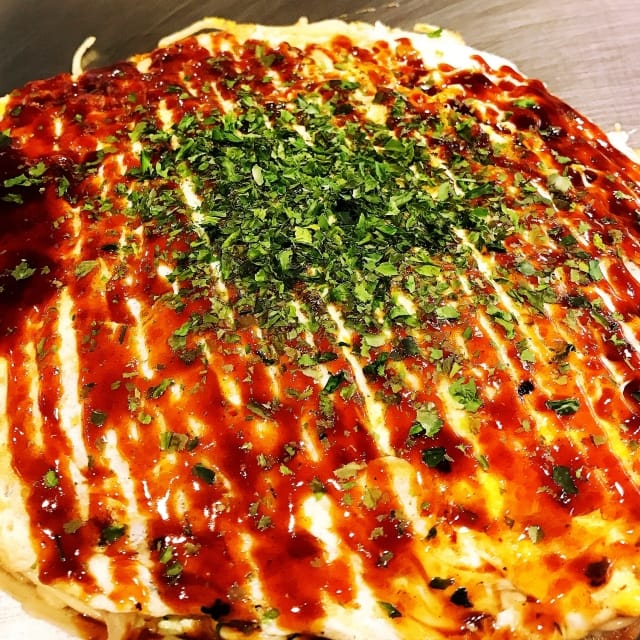
The characteristic of Kansai-style okonomiyaki is that the batter and ingredients are mixed together before grilling. The main ingredient is cabbage, and it's common to add pork, squid, and shrimp.
Kansai, especially Osaka, has a deep-rooted culture of "konamono" (flour-based foods). "Konamono" refers to dishes made with wheat flour, including not only okonomiyaki but also takoyaki and udon. People in Kansai love flour-based dishes.
Area to Enjoy Kansai-Style Okonomiyaki: Fukushima (Osaka)
Source: Google Map by Takkun
If you want to eat Kansai-style okonomiyaki, I recommend Fukushima in Osaka City. Be careful not to confuse it with Fukushima Prefecture in Tohoku.
The area around JR Fukushima Station has many okonomiyaki restaurants popular with locals. These shops are not for tourists, but are loved by the community. It's an area where you can encounter unique okonomiyaki that can only be tasted here.
Hiroshima-Style Okonomiyaki
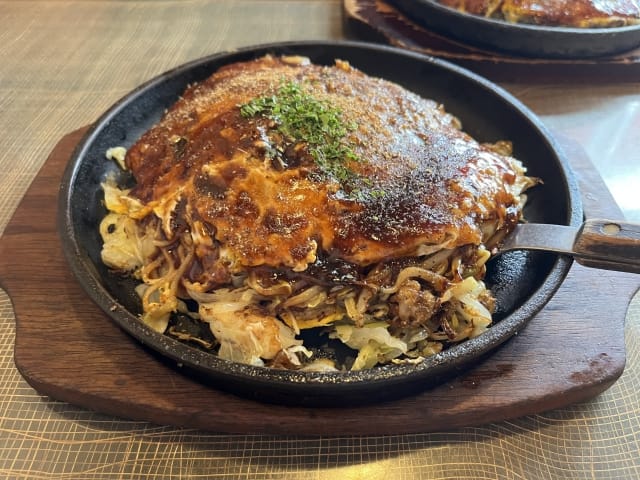
Next, let me introduce Hiroshima-style okonomiyaki. The biggest characteristic of Hiroshima-style is that the ingredients are layered on top of the batter and grilled. Amazingly, noodles are placed on top of the pork and cabbage! Then more ingredients like cabbage, shrimp, and squid are placed on top.
These noodles are different from regular udon or soba - they're special noodles just for okonomiyaki. Thanks to these noodles, Hiroshima-style okonomiyaki has a substantial volume even as a single dish. It'll definitely fill you up.
In Kansai, there's also a style called "modern-yaki" that includes noodles, but in that case, the noodles are added at the end and covered with egg. The key point of Hiroshima-style is layering the ingredients. These differences are interesting, aren't they?
Area to Enjoy Hiroshima-Style Okonomiyaki: Okonomi-mura (Hiroshima)
Source: Google Map by Lina Pollakis
If you go to Hiroshima, definitely stop by "Okonomi-mura". It's the holy land of okonomiyaki, located in the center of Hiroshima City.
Okonomi-mura is lined with unique okonomiyaki shops. It's a very popular spot for tourists, so fully enjoy the charm of Hiroshima-style okonomiyaki.
Website: http://www.okonomimura.jp/foreign/english.html
Tokyo's Monjayaki

Tokyo's local-style okonomiyaki, monjayaki, is also unique. Monjayaki's batter is softer than Kansai-style, and the ingredients are finely chopped, which are its characteristics. The batter and ingredients are mixed together on the griddle, so you can enjoy monjayaki's distinctive sticky texture.
As for the origin of monjayaki, about 70 years ago in Japan, it was a popular snack for children at candy stores, and it evolved into today's monjayaki.
When grilling, the thinly spread parts of the batter get crispy and are delicious too.
Area to Enjoy Monjayaki: Tsukishima
Source: Google Map by ASun
If you want to eat monjayaki, I recommend Tsukishima in Tokyo. This place is said to be the birthplace of monjayaki.
In Tsukishima, there's an area called "Monja Street" where dozens of shops line the street. Each shop offers its own original monjayaki menu.
From traditional styles to modern arrangements, there's a wide variety. I'm sure you'll find your favorite dish.
Types of Shops Where You Can Eat Okonomiyaki in Japan
Now, let me explain the types of shops where you can actually eat okonomiyaki. In Japan, besides specialty okonomiyaki restaurants, there are several other types of shops.
Okonomiyaki Specialty Restaurants
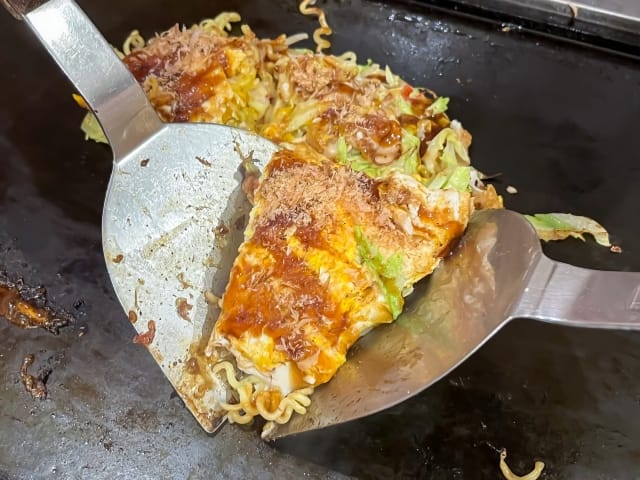
First, there are okonomiyaki specialty restaurants. These are shops that specialize in providing okonomiyaki, where you can enjoy authentic flavors. Some shops even have counter seats where you can see the artisans grilling up close.
If it's an izakaya-style specialty restaurant, the appeal is being able to enjoy okonomiyaki with delicious alcohol. It's irresistible for those who love drinking.
There are also self-service style shops. Don't worry if you're not confident about grilling yourself. The staff will teach you the tricks of grilling, and you can also have them grill it for you.
Take-out Specialty Shops
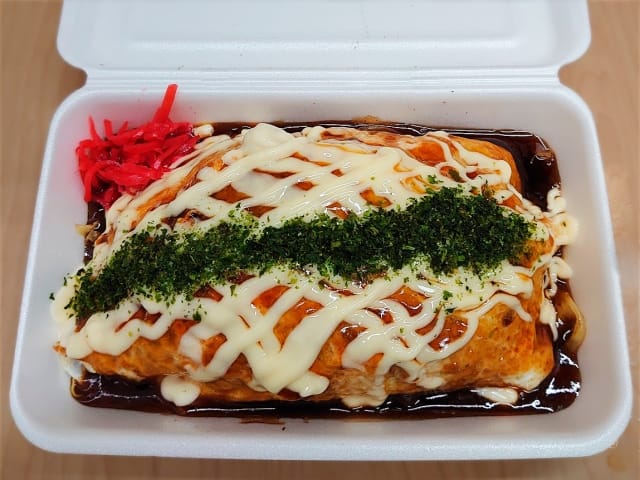
Next, let me talk about take-out specialty shops. These are shops where you can take okonomiyaki home to eat, and the appeal is the more reasonable prices compared to specialty restaurants. Especially in Osaka, there are many take-out specialty shops.
The taste is also authentic and delicious, so it's recommended when you want to enjoy okonomiyaki casually. Osaka locals also rely on them when having okonomiyaki parties at home.
Food Stalls

Finally, I like okonomiyaki from food stalls. During the summer festival season, you can often find okonomiyaki stalls all over Japan.
Okonomiyaki from stalls is especially delicious with the festival atmosphere. I think eating okonomiyaki in the unique atmosphere of a stall is another enjoyable experience.
Recommended Drinks to Pair with Okonomiyaki
From here, I'll introduce drinks that go well with okonomiyaki. When having delicious okonomiyaki, I recommend pairing it with a delicious drink.
Beer
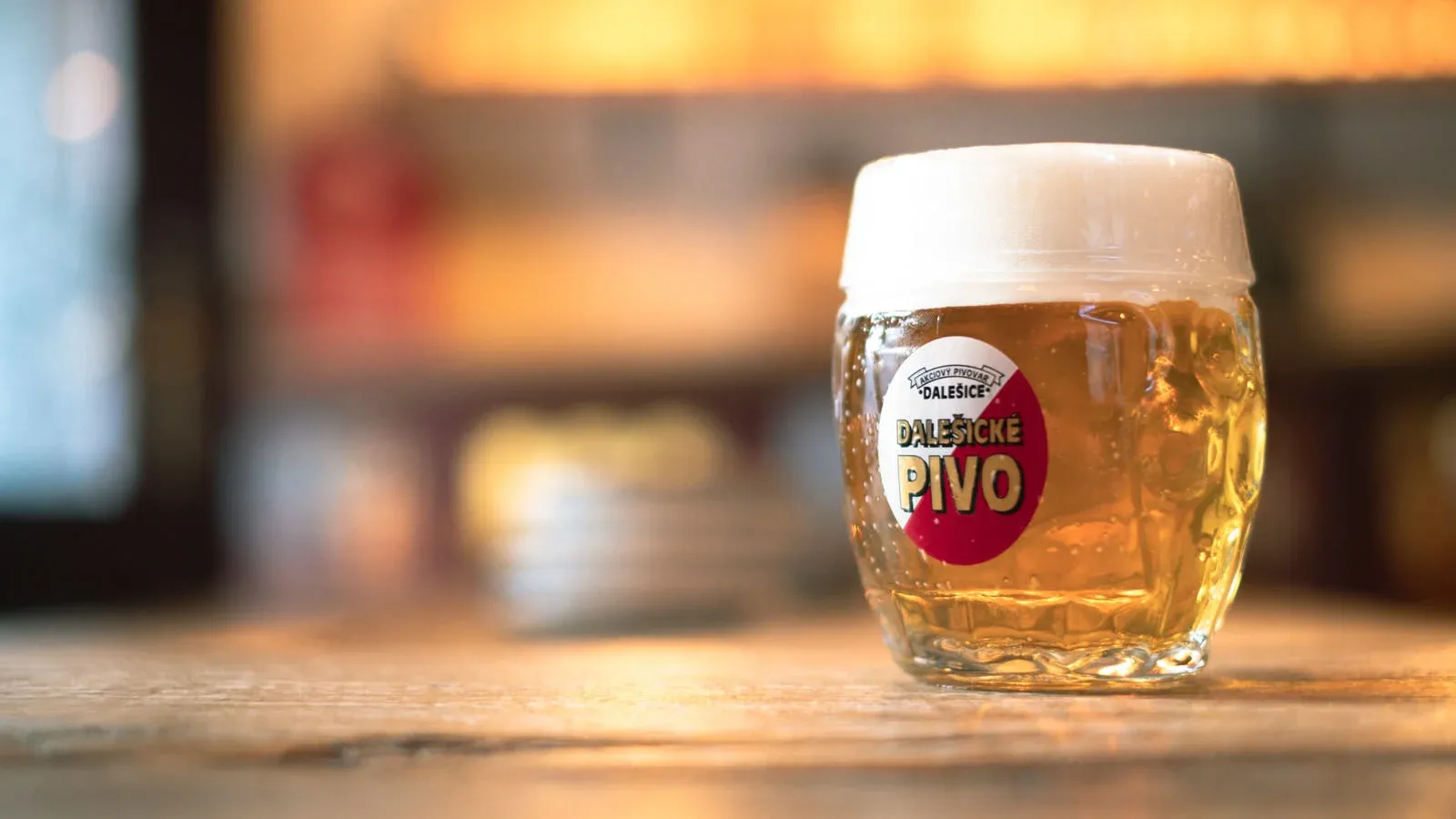
First is the standard of standards, beer. When it comes to drinks that go well with okonomiyaki, beer is the first thing that comes to mind for Japanese people.
The rich flavor of okonomiyaki and the refreshing throat-feel of beer. This combination is the best. Personally, I recommend a well-chilled beer.
Chuhai (Shochu Highball)
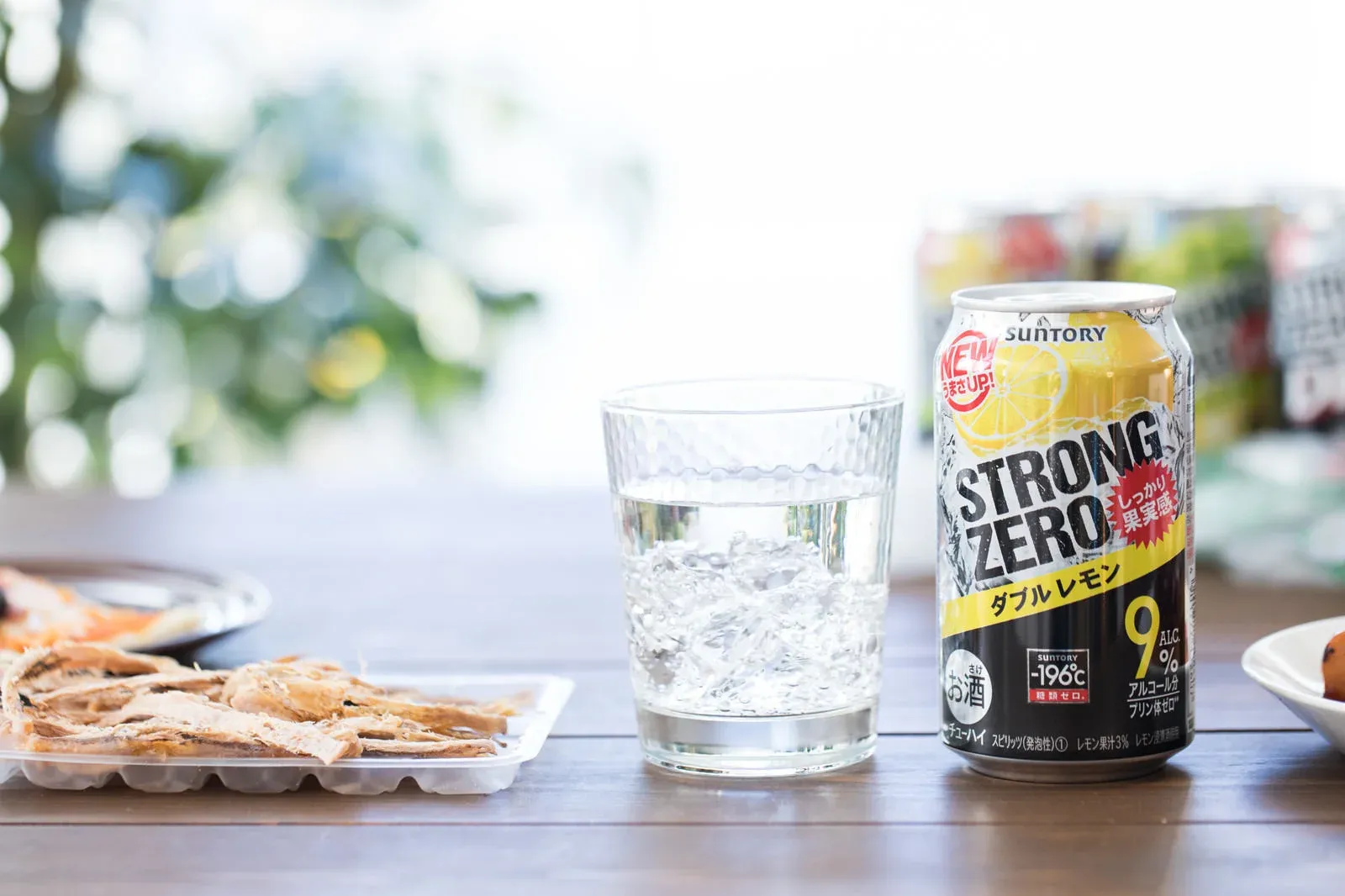
Next is chuhai. Chuhai is an alcoholic drink made by mixing shochu (distilled liquor) with carbonated water, fruit juice, etc.
Its impactful flavor that doesn't lose to okonomiyaki goes well with okonomiyaki. I recommend citrus-based chuhai like lemon or lime.
Oolong Tea
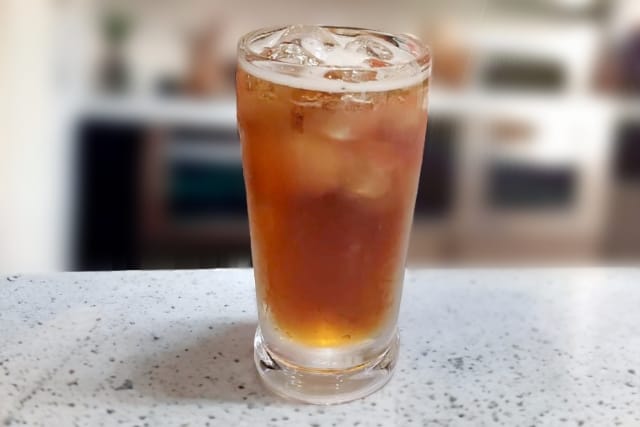
For those who don't like alcohol, I recommend oolong tea in this Okonomiyaki Food Guide. Oolong tea has the effect of neutralizing the greasiness of okonomiyaki.
Personally, I think iced oolong tea goes better with okonomiyaki. The cold tea creates a contrast with the piping hot okonomiyaki, making it taste even better.
Cola
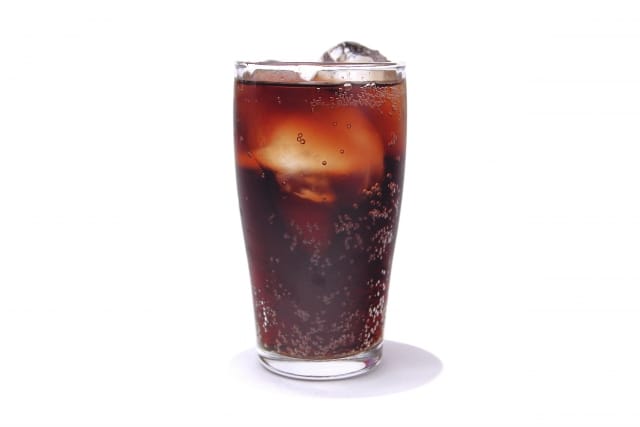
It may be surprising, but cola also goes well with okonomiyaki. The sweetness of cola and the stimulation of the carbonation match the taste of okonomiyaki.
Give it a try. Many people get hooked on this unique combination.
Sake

Lastly in this Okonomiyaki Food Guide, there's sake. Sake goes especially well with okonomiyaki that uses seafood.
The clean taste of sake brings out the rich flavor of okonomiyaki. However, be careful not to drink too much, as the alcohol content is high.
Frequently Asked Questions about Okonomiyaki
Finally, let me answer some frequently asked questions about okonomiyaki from foreigners.
What's the difference between okonomiyaki and takoyaki?
Okonomiyaki is flat and pancake-shaped, while takoyaki is round and ball-shaped. As for ingredients, okonomiyaki often uses pork, but takoyaki features octopus.
Also, while okonomiyaki is basically topped with sauce, takoyaki is sometimes eaten without sauce. In this way, they are dishes with different appearances and tastes.
Where can I buy okonomiyaki sauce?
You can find okonomiyaki sauce in the sauce section of Japanese supermarkets. A famous one is Otafuku Sauce. It's characterized by a sweet taste and goes perfectly with okonomiyaki.
It's also recommended as a Japanese souvenir, so definitely look for it.
In this Okonomiyaki Food Guide, I introduced in detail the charm and ways to enjoy okonomiyaki.
For foreigners, okonomiyaki may be an unusual dish. But once you try it, I'm sure you'll be captivated by its deliciousness.
Use this article to prepare, and when you come to Japan, be sure to visit an okonomiyaki restaurant!
